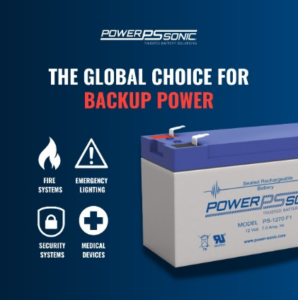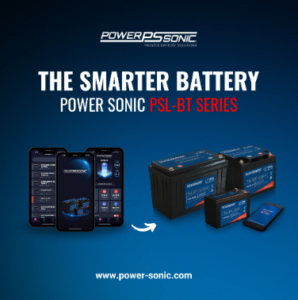Understanding the Differences Between Sealed Lead Acid and Lithium Batteries with Power Sonic

Selecting the right battery starts with understanding the differences between Sealed Lead Acid (SLA) and Lithium technologies, each offering unique advantages to meet specific energy needs. At Power Sonic, our cutting-edge technology and over 54 years of expertise drive the development of both SLA and Lithium Iron Phosphate (LiFePO4) batteries, ensuring reliable and innovative energy solutions. These two battery types vary in composition, performance, lifespan, and ideal applications, making it essential to match the technology to your specific requirements.
Sealed Lead Acid (SLA) Batteries: Reliable and Cost-Effective
 SLA batteries, a tried-and-true technology, have been widely used for decades in various applications, from life safety and security to medical devices and backup power systems. SLAs are known for their reliability, low upfront costs, and ability to deliver consistent power in stable conditions. However, one trade-off with SLA batteries is their weight and size. They tend to be heavier and bulkier than their lithium counterparts, which can be a limiting factor in applications where space and weight matter, such as in portable equipment or electric vehicles.
SLA batteries, a tried-and-true technology, have been widely used for decades in various applications, from life safety and security to medical devices and backup power systems. SLAs are known for their reliability, low upfront costs, and ability to deliver consistent power in stable conditions. However, one trade-off with SLA batteries is their weight and size. They tend to be heavier and bulkier than their lithium counterparts, which can be a limiting factor in applications where space and weight matter, such as in portable equipment or electric vehicles.
Lithium Iron Phosphate (LiFePO4) Batteries: Modern and High-Performance
In contrast, LiFePO4 batteries offer a modern approach, providing a higher energy density that translates into more power per pound of weight, and a lighter, more compact design. Lithium Iron Phosphate (LiFePO4) batteries, one of the safest and most stable types of lithium batteries, are especially known for their durability and reliability. These batteries perform well across a wide range of temperatures, have a longer lifespan, and can handle more charge-discharge cycles than SLAs, making them a suitable choice for demanding applications like renewable energy storage, electric vehicles, or high-performance devices.
 Another key difference lies in charging. Lithium batteries have faster charging times and can handle partial charges without degrading the battery, whereas SLA batteries are more prone to sulfation—a condition where the lead sulfate crystals harden and reduce capacity—when not fully charged. Lithium’s higher efficiency and longer lifespan often outweigh its higher initial cost in long-term applications, especially where battery replacement or frequent charging is a concern.
Another key difference lies in charging. Lithium batteries have faster charging times and can handle partial charges without degrading the battery, whereas SLA batteries are more prone to sulfation—a condition where the lead sulfate crystals harden and reduce capacity—when not fully charged. Lithium’s higher efficiency and longer lifespan often outweigh its higher initial cost in long-term applications, especially where battery replacement or frequent charging is a concern.
Power Sonic has even incorporated proprietary technology into its Lithium Bluetooth batteries, allowing users to monitor battery health, runtime performance, and control the battery via an app. This added functionality enhances the user experience and simplifies energy management.
Which Battery Is Right for Your Business Needs?
Ultimately, the choice between SLA and Lithium batteries depends on the application and specific needs. SLAs are ideal for reliable, lower-cost power sources where weight isn’t a primary concern, while Lithium batteries offer longevity, lighter weight, and faster charging, making them better suited for high-performance or energy-intense tasks. Knowing the strengths and limitations of each type can help you choose the right battery technology to fit your energy demands efficiently.
Power Sonic: Over 54 Years of Innovation and Excellence
At Power Sonic, we’ve been at the forefront of battery innovation for over 54 years. With a diverse range of Sealed Lead Acid and Lithium Iron Phosphate batteries, we are committed to providing cutting-edge technology, reliable solutions, and unmatched expertise to customers worldwide. Whether you need a dependable backup power source or a high-performance lithium solution, Power Sonic is your trusted partner in energy storage.
Explore our battery range today to find the right solution for your energy needs and experience the Power Sonic difference.




